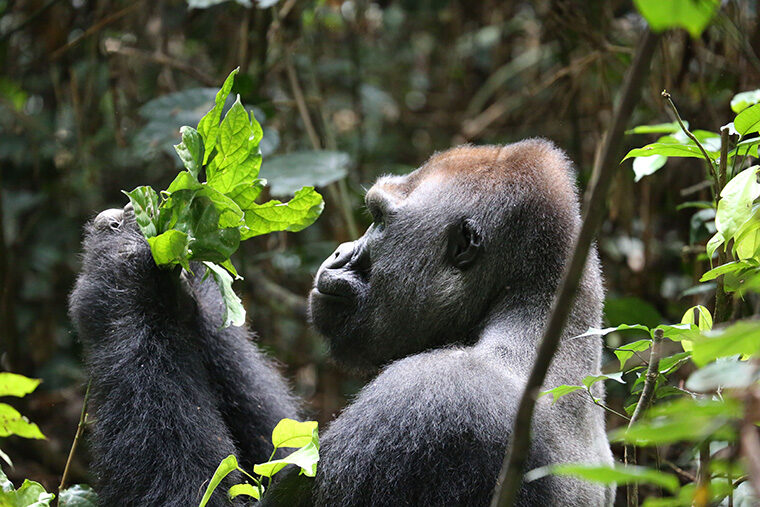A new study says that the tropical forests of Western Equatorial Africa are increasingly coming under pressure from logging, poaching and associated disturbances.
Publishing in the journal Frontiers in Forests and Global Change, researchers from the Lincoln Park Zoo, the Wildlife Conservation Society and Washington University in St. Louis found that logging road construction had accelerated over the past two decades and has led to a dramatic decline of intact forest lands in the region. Increased human immigration and degradation of natural resources follows in the wake of such road expansion.

Researchers including Crickette Sanz, associate professor of biological anthropology in Arts & Sciences, together with Lincoln Park Zoo authorities, documented the first instances of elephant poacher incursions in Goualougo Triangle region of Nouabalé-Ndoki National Park — considered the most pristine block of rainforest remaining in the entire Congo Basin. This coincided with the arrival of roads and active logging in adjacent forest. Increased access to intact forest lands that facilitates illegal hunting raises concern and increases challenges for authorities tasked with protecting wildlife across Western Equatorial Africa.
Intact forest landscapes (IFLs) are forest and associated mosaics lacking overt human disturbance such as infrastructure. The vast majority of IFLs found in the Republic of Congo are located in the north of the country, which is also inhabited by extraordinary biodiversity, including chimpanzees and western lowland gorillas. Forests of northern Congo are also composed of timber-rich stands, the exploitation of which is a big driver of the region’s economy and development.
